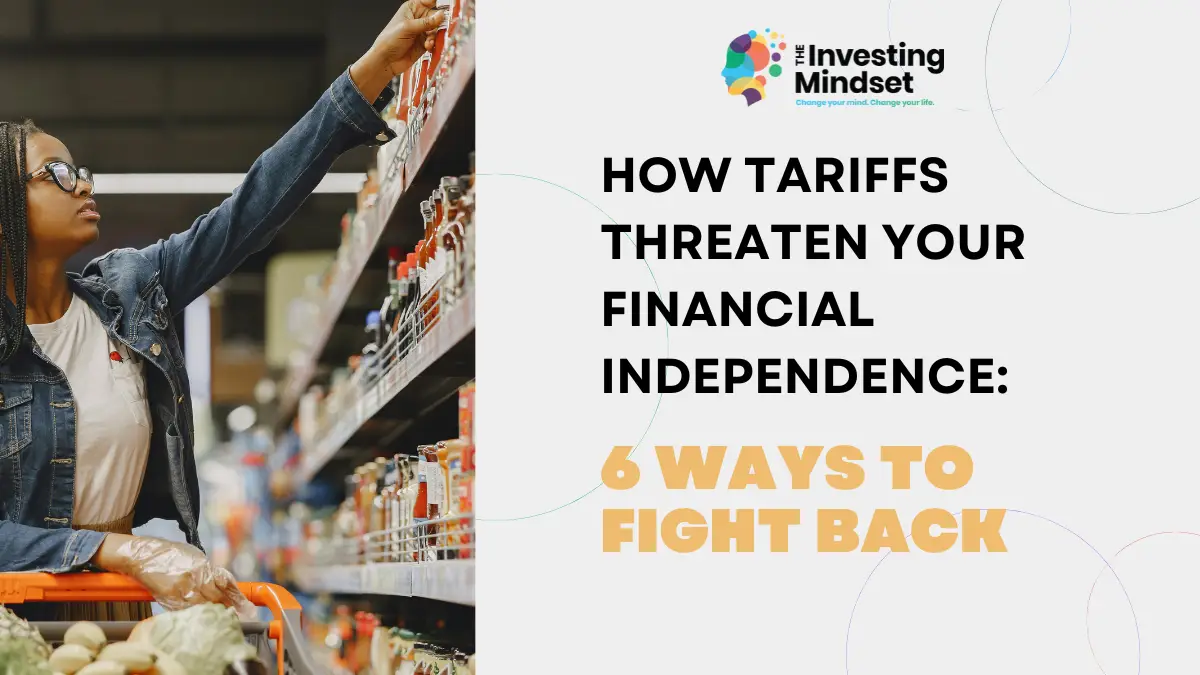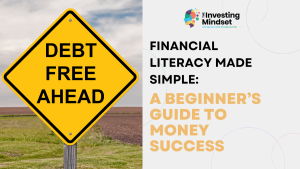Tariffs are hitting your wallet harder than you realize — raising the price of groceries, gas, and everyday essentials. If you’re working toward financial independence (FI), these hidden costs could slow your progress.
In this article, you’ll learn how tariffs and financial independence are connected—and six smart strategies you can use to adapt, save more, and stay on track.
Why Everything Feels More Expensive
You’re working hard toward financial independence.
You track your spending, invest consistently, and pause before every purchase.
But lately, your budget feels tight. Groceries are up. Gas takes a bigger chunk of your paycheck. Even your usual “cheap” buys are creeping up in price.
It’s not just inflation.
It’s tariffs—and they’re sneaking into your FI plan.
What Tariffs Are Doing to Your Wallet
Tariffs are taxes on imports. The idea is to protect local businesses, but in reality? You end up footing the bill.
Companies raise prices to cover these costs. Suddenly, everyday stuff—phones, food, fuel—costs more.
Your careful spending plan starts to strain.
“I thought I was buying the same stuff — until I realized even lunchbox snacks had gone up.”
— Lisa, mom of two in Buffalo
That $40 jump in Lisa’s weekly grocery bill? It’s happening everywhere. My wife told me a pack of kitchen rolls we usually bought for $25 at Costco shot up to $32 in just four weeks.
We used to dine out almost every Friday. Now we limit it to twice a month—because a meal that cost $125 now rings up at $185.
Why This Matters for FI Seekers
If you’re chasing financial independence, chances are you’re:
Saving aggressively
Investing intentionally
Avoiding lifestyle inflation
Tariffs put pressure on all three. Understanding the relationship between tariffs and financial independence is crucial to maintaining your momentum.
They:
Shrink your savings rate
Force you to spend more to maintain your current standard
Tempt you to slow down or give up
But don’t.
Stay focused on the big picture. Life will throw challenges at you. This is one of them.
Develop the mindset to adjust and keep moving forward.
“Winners never quit. Quitters never win.”
— A quote I live by
Six Smart Moves to Stay on Track
1. Refresh Your Budget
Prices change fast. Revisit your numbers.
What cost $50 last month might cost $60 now. Look for creeping costs, especially in discretionary spending.
Use a financial calculator. Ask yourself:
Am I spending like someone who wants financial independence? Or just keeping up appearances?
Be honest. Let the numbers guide better decisions.
2. Build a “Price-Swap List”
Brand loyalty is expensive. Time to rethink your shopping habits.
Simple swaps help:
Switch organic granola bars to store-brand oat bars
Choose domestic pasta over imported options
I once needed two new door locks. The imported brand cost $120. A local brand? $89.
I called my locksmith friend—he said the difference in quality was minimal.
I saved $62 just by choosing wisely.
Cars, too. The Audi Q3 and Volkswagen Tiguan share the same engine.
But the Audi starts at $38,695. The Tiguan? $30,305. I chose the Tiguan and walked away with top trim for $30K instead of $50K.
These swaps add up fast.
3. Automate Your Savings
Protect your savings rate at all costs.
If you’re investing $500/month, don’t let grocery prices steal from that. Set up auto-transfers to your brokerage or retirement account. Treat saving like a bill—it gets paid first.
“Pay yourself first.” — Jim Rohn
“When you pay your bills, you make others rich. When you save, you build your wealth.” — Mark Ford
I automate my retirement and brokerage accounts. That’s how I stay consistent in bull and bear markets.
4. Use Deal Tools Like a Pro
Use apps like Flipp and Reebee to find store discounts. Combine them with cashback from Rakuten or your credit card rewards.
Sign up for loyalty programs. Our Costco Executive membership gives us 2% back and it paid for our entire renewal. I saved $400 on a new set of tires using that card.
Squeeze value out of every dollar.
5. Batch Cook and Bulk Buy
Tariffs hit staples hard.
Buying in bulk cuts the cost per item. Cooking in batches reduces how often you spend.
We used to grab healthy deli salads for lunch. Now we prep a whole week’s worth for the same price as one serving.
These recurring expenses chip away at your future. Flip the script.
6. Invest in Tariff-Proof Assets
Stay invested—even when the market feels shaky.
Smart options during inflation:
Low-fee index funds
Real Estate Investment Trusts (REITs)
Side hustles that generate active or passive income
Warren Buffett’s rule:
“Rule No. 1: Never lose money. Rule No. 2: Never forget Rule No. 1.”
I’ve lived through the dot-com crash and the 2008 meltdown. I don’t chase hype anymore—I prioritize protecting my capital and staying consistent.
Index funds spread your risk.
REITs let you invest in real estate without owning property.
And side hustles? They give you a backup income stream you control.
Final Thought: Tariffs Are a Test, Not a Stop Sign
Every journey to financial independence comes with detours.
Tariffs are one of them. They challenge your plan—but not your purpose.
You’ve built strong habits. You’ve made smart decisions.
Now’s the time to double down, not give up.
Tweak your strategy. Adapt where you need to.
But don’t lose sight of the goal.
Action Guide: How to Stay on Track Despite Tariffs
✅ Review your budget monthly. Identify price creep.
✅ Make price-swapping a habit—store brands, local goods, and budget-friendly options.
✅ Automate savings and investing. Pay yourself first.
✅ Use apps like Flipp and Rakuten to stretch your dollars.
✅ Buy in bulk and meal prep to cut waste and cost.
✅ Invest consistently—index funds, REITs, or build a side hustle.
Remember: Tariffs are just another challenge in your journey. By learning how to manage the impact of tariffs on financial independence, you’ll strengthen your resilience and commitment to your goals.
It’s not about what happens around you.
It’s how you respond.
You’ve got this. Keep going.




